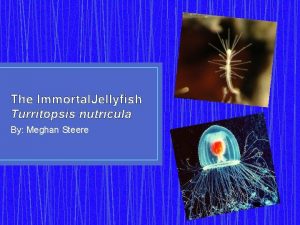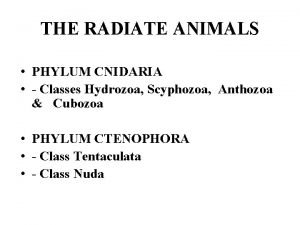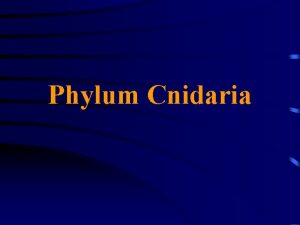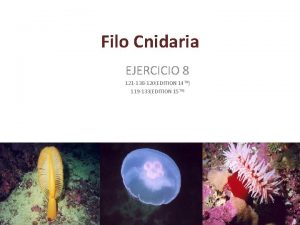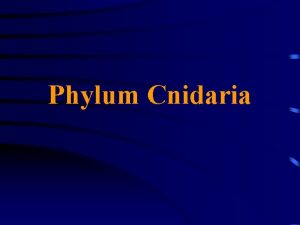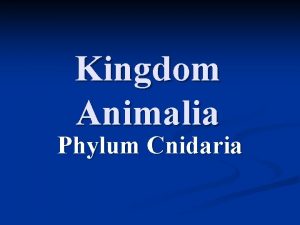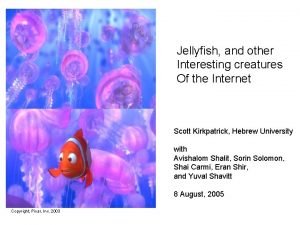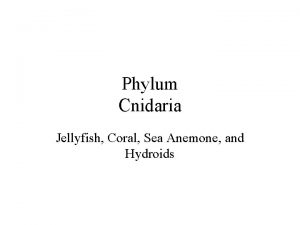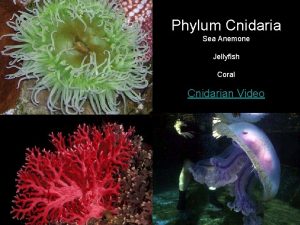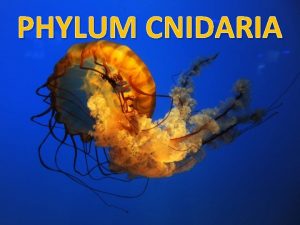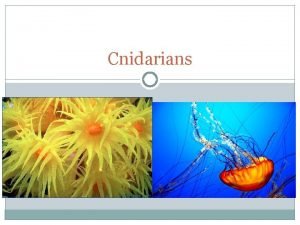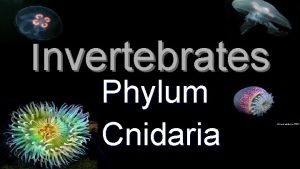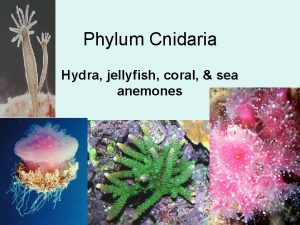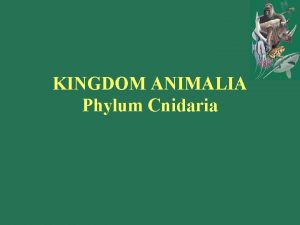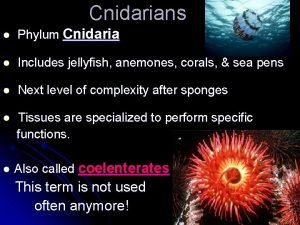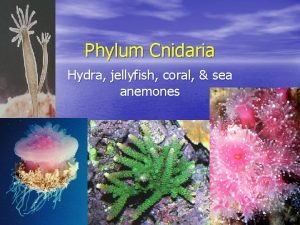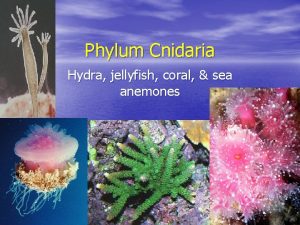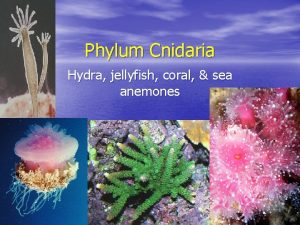Phylum Cnidaria Phylum Cnidaria This phylum includes Jellyfish














- Slides: 14

Phylum Cnidaria

Phylum Cnidaria This phylum includes: Jellyfish Coral Sea anemones 10, 000 species of animals found in aquatic and mostly marine environments


General Information Radial symmetry is primary Gastrovascular cavity for digestion Tentacles feeding, locomotion, defense Chidocytes Stinging cells, known as, nematocytes

General Information Two body forms: Polyp: cylindrical, attached, mouth, and tentacles upright Medusa: umbrella, large mouth, and tentacles down Polymorphic or alternates between polyp and medusa Solitary or colonial


Tissue Differentiation and Body Wall Epidermis Epithelliomuscular Intersitial cells Capable of forming other tissues Nerve cells Sensory and motor Cnidocytes Nemotocytes, used only once Mesoglea Jellly-like matrix, most acellular, fluid and ridged Gastrodermis Nutritive Muscle and enzymatic cells

Nervous System Network of nerve fibers Most are inepidermis Connected to the gastrodermis

Skeletal System Mesoglea Endoskeleton Calcium carbonate or chitin This is the exoskeleton

Digestive System Gastrovascular Nutritive, cavity muscle, and enzymatic All cnidarians are carnivorous Small planktonic animals They catch with their tentacles and stinging nematocysts Do not go hunting, but have to wait for their prey Larger jellyfish can capture small fish the same way

Circulatory System No circulatory system Have a “nerve net” of interconnected nerve cells

Reproduction and Development Asexual budding of polyps Sexual reproduction Diecious Gametes produce from interstitial cells of the epidermis or from the gastrodermis The life cycle is variable and complex Not all species can do both


Classes of Phylum Cnidaria Anthozoa Cubozoa Hydrozoa Scyphoza Staurozoa
 Phylum cnidaria hydra
Phylum cnidaria hydra Turritopsis nutricula immortal jellyfish
Turritopsis nutricula immortal jellyfish Life cycle of coelenterata
Life cycle of coelenterata Portuguese man of war diet
Portuguese man of war diet Ecological importance of cnidarians
Ecological importance of cnidarians Obelia diagram
Obelia diagram General characteristics of cnidaria
General characteristics of cnidaria Phylum cnidaria characteristics
Phylum cnidaria characteristics Gonopore cnidaria
Gonopore cnidaria Phylum cnidaria general characteristics
Phylum cnidaria general characteristics Kingdom animalia phylum cnidaria
Kingdom animalia phylum cnidaria Adaptation of jellyfish
Adaptation of jellyfish Symmetrein
Symmetrein Jellyfish
Jellyfish Box jellyfish
Box jellyfish

